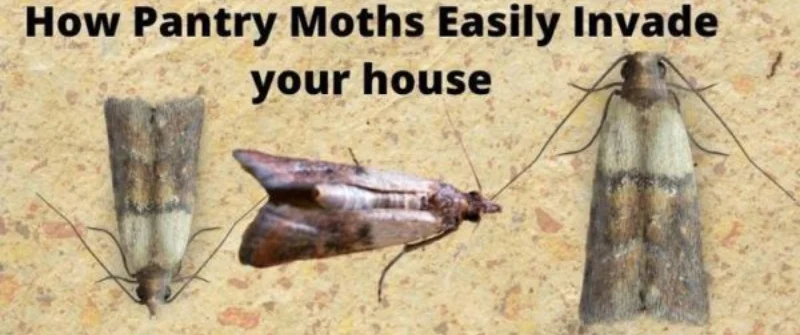Moths are common household pests. They are usually found flight around light bulbs. You will also find them in your food or on your clothes. The mystery about these pests is knowing how pantry months enter your house.
No matter the source of the pantry moths, they have a special destination in your house, and in the kitchen. Their preferred destination is the pantry. In particular, they go directly for the food in your pantry, hence the name.
Also Read: 5 Non-electric Water Purifiers suitable for Borewell water
How do Pantry Moths Get into the House?
The most common way pantry moths get into houses is by following the scent of food coming from the house through openings like windows and doors. They are attracted by the scent of dried foods from your house and they follow it all the way to the kitchen, the pantry, and the store.
Of all these three, the pantry is their most common destination after entering the house.
However, only winged moths can get into the house via these channels since they can fly and move independently.

Pantry moths do not need wings to fly into your house. Sometimes people carry them into their houses as stowaways in dry foods bought at the store.
At the same time, while adult webbing clothes moths also find their own way into a house through openings.
On rare occasions, their larvae can also get into the house as stowaways on clothes – this is especially common with second-hand clothes.
However, pantry moths are tiny creatures, and they can get in through virtually any opening big enough. This includes opening around the house’s plumbing lines, dryer vents, and cables passing through walls.
It is important to get rid of pantry moths before they accumulate and infest your food. It would also help if you kept them away in the first place.
To do that, you will need to know what pantry moths are attracted to and how they get into the house. Here are detailed answers to these questions and more.
What Attracts Pantry Moths to the House?
Pantry moths are mostly attracted to a house by the presence of dry foods such as flour, cereals, and dry fruit. It is sort of a survival tactic – these moths need to breed directly on the food to give their larvae a ready source of food after the eggs hatch.
It is the female pantry moths that are attracted to the food in your pantry. Adult male pantry moths do not have mouths, so they do not need to infest the food.
However, they do anyway in a bid to breed with the females, who start excreting attractive sexual pheromones once they find a viable breeding ground.
What causes pantry moth entry into the house
Their entry is basically caused by their need to feed and reproduce. It is for this reason that the adult months search for an environment to settle. And, thanks to the scent of the food in your house, they get the invite, just like any other pantry pest.
Besides pantry moths, other species are also attracted to houses. The other most common species known to infest houses is the webbing clothes moth. These moths are attracted to the house by the clothes in your closet.
Their larvae feed on natural fabrics by breaking down the trapped protein and residue body oils. They especially prefer woolen clothes. In fact, the larvae are in the most difficult moth stage to exterminate since it is inside the food, especially the flour.
Also Read: Can you Paint a Kitchen Sink? How to paint kitchen sink a New
Tips to Tell if you have a Moth Infestation and – How to Monitor the Invasion
It is difficult to catch pantry moths (or any other moth species for that matter) sneaking into your house.
In fact, you may not notice their presence until they have accumulated and turned into an infestation. Even then, many people often cannot tell whether they are dealing with a pantry moth infestation.
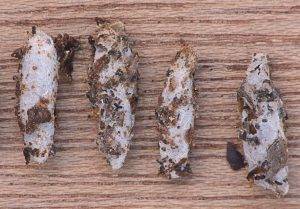
The best way to tell if you are dealing with a pantry moth infestation is by inspecting the pantry.
In most cases, you will find the moths burrowed under the surface of flour, cereal, and other dry foods sheltered under soft cocoon-like clumps.
Another way to tell whether there are moths is by inspecting for holes in the food’s packaging – you should be concerned if you notice multiple holes.
Adult pantry moths are easy to spot, but eggs and larvae are more subtle. It is easy to mistake moth eggs for tiny rock-like particles.
However, the larvae are easier to spot as they are always gnawing on the food. They are small, but their bodies are distinct in shape and often colored white or pink with a dark head. However, you will need to sift deep through your foodstuffs to find these larvae.
Pantry Moth Extermination and Prevention Tips
As mentioned, most people do not realize that they have a moth infestation on their hands until it is too late. The only option left once you make the discovery is extermination, and prudence calls for prevention against future attacks.
Learn how to end pantry moths from your kitchen once and for all. There are two ways to get rid of pantry moths: trapping the adult moths and killing off the larvae.
There are effective and non-toxic pantry moth traps that attract male adult moths and trap them on a sticky surface to stop them from breeding with the females.
This is a long-term solution as it limits the moths’ population, but it will not get rid of the immediate problem. You will need to clean out the pantry to stop the infestation.
Since the larvae are difficult to find, you will need to remove all the food from the pantry and examine it closely. You will need to get rid of contaminated food properly to make sure that the larvae die. You should also clean away all the eggs and kill off any exposed larvae.
Prevention is simple. First, you should leave the pantry empty for some time before restocking it. It also helps to vacuum the pantry and wipe it clean with a solution of vinegar and water to deter moths and other pests.
As we stated in the guide to eradicate pantry months, sealing of food id key. You should also ensure that all the food is properly sealed and covered before putting it back into the pantry.
Finally, monitor the pantry closely to catch any returnees early enough to prevent another infestation. Unfortunately, there is not much you can do about open spaces in the house.
Also Read: Can a Porcelain Kitchen Sink be Refinished or Resurfaced?
How Long does a Pantry Moth Live: How Each Exists in the House

An adult pantry moth lives between 1 and two weeks depending on the environment and food it gets.
However, the full life cycle from an egg to adult is between 1 month and 5 months, also depending on the conditions that each stage is exposed to.
The pantry moths in your house will eventually leave or die off, but it will take some time if you do not take the hammer at them first.
Still, it wouldn’t hurt to know how long these pesky pests live, right? Here is an overview of a moth’s life cycle and how each lives in the house.
First Stage – Egg
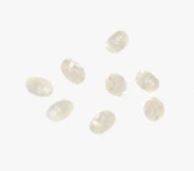
A moth’s life begins with an egg. Mature female moths can lay as many as 400 eggs at a time.
They prefer breeding in foodstuff to provide a ready food supply for the larvae when the eggs hatch.
This is the most disturbing form of pantry moth in the house since you cannot easily see them when they camouflage in the flour.
The eggs appear whitish-grey in color and hatch after a period of about seven days.
Second Stage – Larva
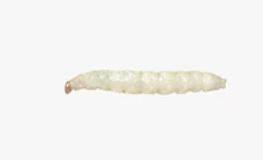
Moth larvae are considerably more destructive in the house because they feed a lot.
They are also harmful to adult moths because they can easily be ingested or cooked together with the flour.
At the larval stage, moths are highly active in feeding since they need enough nutrition to grow into pupae and finally develop into adult moths.
Moth larvae look like tiny worms. They appear whitish or pinkish, depending on the food they feed on and have blackheads. Moth larvae live for about three months, during which time they feed as much as necessary to survive the pupa stage.
Third Stage – Pupa
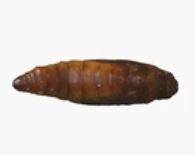
Once the larva is developed enough to move on to metamorphosis, it becomes dormant and wraps itself in a web-like cocoon.
The cocoon protects the vulnerable pupa as it develops into an adult moth.
In your house, the cocoons are usually hidden inside cracks and crevices or on sharp corners.
They are also commonly found under food particles. The pupa takes about 15 to 20 days to develop into an adult moth.
Fourth Stage – Adult

Once the pupa develops, the adult moth comes out as a winged insect. The adult moth is primarily developed for mating and breeding.
They do not even have mouths to feed, and their wings are to fly around in search of mating partners.
In the house, they fly around the pantry and hide inside the food or near the corners.
They also have strong olfactory organs that help them seek out potential mates. Adult moths live for about one to two weeks.
Also Read: 10 ways how to Remove hard water Stains from Porcelain Sinks
Final Word
Pantry moths – as well as moths of other species – are difficult to spot when an infestation is just beginning. They get into houses through different channels, including open spaces such as windows and as stowaways on their objects of attraction such as food and clothes.
Fortunately, moths are easy to get rid of following an infestation, and there are effective ways of preventing future infestations.
Learn more about pantry months in this video


As a homeowner, I am specifically keen on home improvement. I am passionate about homes, yards, and home improvement. I blog on home ideas and reviews on solutions that make homes better.
